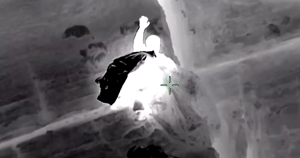The Catalyst for "Sugarcane": Uncovering the Dark Legacy of Residential Schools
The discovery of hundreds of unmarked graves at an Indian residential school in Canada in 2021 served as a catalyst for the creation of the Oscar-nominated documentary Sugarcane. Filmmakers Julian Brave NoiseCat and Emily Kassie spent years uncovering the harrowing truth behind one of these institutions, shedding light on systemic abuses, including infanticide and the exploitation of Indigenous girls by priests. Now streaming on Hulu, Sugarcane paints a grim picture of the state-funded residential schools and their devastating impact on Indigenous communities. The film has sparked a grassroots movement, urging a broader reckoning with the atrocities committed in these schools and inspiring survivors to come forward with their stories.
A Personal and Familial Journey: The Making of "Sugarcane"
For filmmaker Julian Brave NoiseCat, the project became deeply personal. His family had attended St. Joseph’s Mission near the Sugarcane Reservation in British Columbia, the same school Kassie chose to focus on for the documentary. During the filmmaking process, NoiseCat discovered shocking details about his own family’s past, including how his father was born in a dormitory and found in the school’s incinerator. This revelation compelled NoiseCat to confront his own painful history and address unanswered questions about his father’s upbringing. By intertwining personal narratives with the broader historical context, Sugarcane offers a powerful exploration of intergenerational trauma and healing.
Uncovering the Truth: The Residential School System
Between the 19th century and the 1970s, over 150,000 First Nations children were forcibly enrolled in state-funded Christian residential schools as part of Canada’s assimilation policies. These schools, predominantly run by Roman Catholic missionary congregations, subjected children to forced conversion, language suppression, physical abuse, and emotional trauma. Up to 6,000 children are believed to have died in these institutions. Similar systems existed in the United States, where Catholic and Protestant boarding schools also perpetuated abuse and cultural erasure. Sugarcane brings these atrocities to light, exposing the genocide and cultural destruction that Indigenous communities endured.
A Call to Action: Sparking National Dialogue
Since its debut at the Sundance Film Festival, Sugarcane has gained significant traction, screening at the White House, Canadian Parliament, and over a dozen Indigenous communities. The film has ignited a national conversation about the residential school system and its ongoing impact. Kassie emphasizes that Native issues often remain overlooked in global discussions of human rights, but Sugarcane aims to change that. By centering Indigenous voices and stories, the film challenges societies to confront the foundational injustices that shaped North America. As Kassie notes, this is not just a historical issue but a ongoing struggle for justice and accountability.
Breaking Barriers: Representation and Recognition
Sugarcane marks a historic milestone as the first film by an Indigenous North American filmmaker to receive an Oscar nomination. This achievement highlights the long-overdue need for authentic Indigenous representation in media. The film industry has historically marginalized Native stories, often reducing them to stereotypes or ignoring them altogether. NoiseCat hopes that Sugarcane will pave the way for more Indigenous storytellers to be recognized and heard. The film’s success is a testament to the power of amplifying marginalized voices and challenging the erasure of Indigenous histories.
A New Chapter: Healing and Reckoning
For NoiseCat and Kassie, Sugarcane is more than a film—it’s a step toward healing and reconciliation. The filmmakers have witnessed the profound impact of their work, as survivors share their stories and communities begin to confront their painful pasts. While the film has sparked hope, it also arrives at a time when political support for further investigation and accountability is lacking. NoiseCat and Kassie remain optimistic, however, believing that Sugarcane will serve as a beginning, not an ending, to the conversation about residential schools and their legacy. As NoiseCat says, the film is a call to grapple with the untold stories of Native America, ensuring that they are no longer ignored or forgotten.















